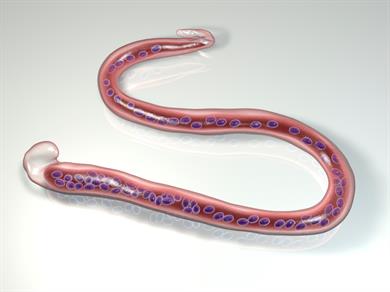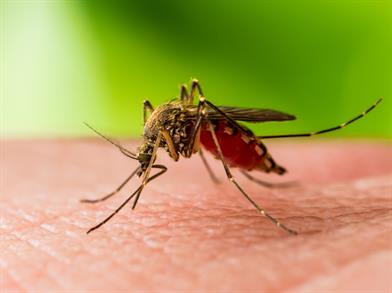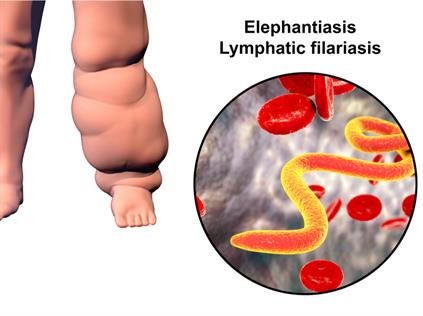PDF chapter test TRY NOW
Filariasis is known to occur in the Nile region. Archaeological findings suggest that the disease may have been present as early as \(2000BC\). Filariasis is one of the major health problems in India.

Wuchereria bancrofti
How it spreads: It is transmitted by the bite of an infected Culex mosquito. Deposition of the parasite at the site of mosquito bite will happen. Then, parasite passes through the punctured skin and finally reaches the lymphatic system. They appear in large numbers in the bloodstream during the night displaying nocturnal periodicity.

Culex mosquito
Incubation period: The incubation period of filarial worm is 8 to 16 months.
Symptoms:
- Acute infection such as fever
- Inflammation in lymph glands
- Chronic infection of filaria causes elephantiasis. It affects the legs, scrotum and arms.
Note: Elephantiasis is the enlargement and hardening of legs, scrotum and arms due to tissue swelling.

Elephantiasis
Control and prevention of vector-borne diseases:
- Using mosquito nets, screens, repellents and ointments to prevent mosquito bites.
- Elimination of reservoir of infection, i.e., breeding places. This is possible by providing
1. Adequate sanitation
2. Underground wastewater drainage
3. Disposable system
4. Drainage of stagnant water - Water storages in any uncovered container should be avoided. Water tank, pots, flower pots, discarded tyres are examples of water storage.
- Spraying of oil on stagnated water bodies prevent the development of mosquito larvae.
- Spraying insecticides to kill adult mosquitoes.
- Citronella oil or eucalyptus oil should be applied on the exposed skin to prevent mosquito bites.

A picture explains how to prevent mosquito bites.
